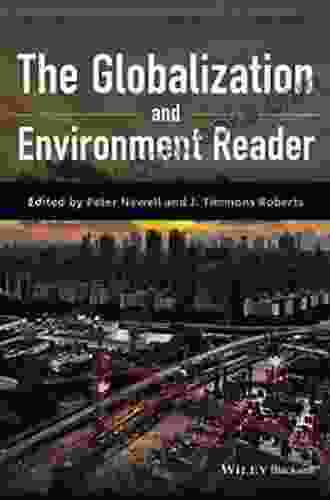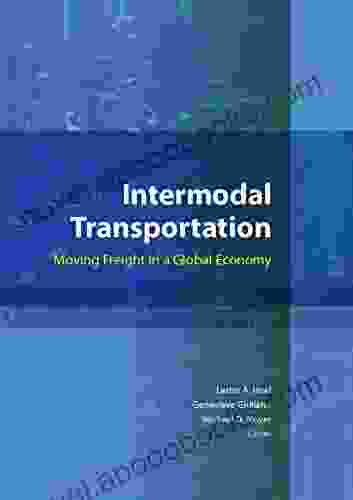Unraveling the Complexities of International and Interregional Migration: A Comprehensive Guide for Understanding Global Population Movements

In the tapestry of human history, migration has always been an intricate thread, weaving together the destinies of individuals, communities, and nations. From the earliest nomadic tribes to the mass migrations of the modern era, people have crossed bFree Downloads in search of new opportunities, refuge, or simply the fulfillment of their dreams.
4.4 out of 5
| Language | : | English |
| File size | : | 16950 KB |
| Text-to-Speech | : | Enabled |
| Screen Reader | : | Supported |
| Enhanced typesetting | : | Enabled |
| Word Wise | : | Enabled |
| Print length | : | 432 pages |
In recent decades, the world has witnessed an unprecedented surge in international and interregional migration. Driven by a complex interplay of economic, political, social, and environmental factors, these population movements have reshaped the demographic landscape of countries and regions, giving rise to new challenges and opportunities.
This article offers a comprehensive exploration of international and interregional migration, shedding light on the driving forces behind these movements, their consequences, and the policy frameworks that shape them. By unraveling the complex dynamics and multifaceted nature of migration, we aim to enhance our understanding of this global phenomenon and its far-reaching implications.
Understanding International and Interregional Migration
International migration refers to the movement of people across national bFree Downloads, while interregional migration involves the movement of people between different regions within a country. These movements can be motivated by a wide range of factors, including:
- Economic factors: People often migrate in search of better economic opportunities, such as higher wages, better job prospects, or improved living conditions.
- Political factors: Migration can be driven by political instability, war, persecution, or the lack of basic freedoms in one's homeland.
- Social factors: People may migrate to join family members, build stronger social networks, or escape discrimination or social prejudice.
- Environmental factors: Climate change, natural disasters, and environmental degradation can force people to leave their homes and seek refuge elsewhere.
The Consequences of International and Interregional Migration
Migration has profound consequences for both the sending and receiving countries. For sending countries, migration can lead to a loss of skilled workers, a decline in population growth, and an increase in the burden on social welfare systems. On the other hand, receiving countries may experience an influx of new workers, which can boost economic growth, increase labor force diversity, and enhance innovation. However, migration can also lead to social tensions, cultural clashes, and competition for resources.
The impact of migration on individuals is equally complex. Migrants often face challenges such as language barriers, cultural differences, discrimination, and social isolation. However, migration can also provide opportunities for personal growth, economic empowerment, and improved living conditions.
Managing International and Interregional Migration
The management of international and interregional migration is a complex and multifaceted task. Governments around the world have adopted a range of policies to address the challenges and opportunities associated with migration. These policies include:
- Immigration policies: These policies regulate the entry and residence of foreign nationals, including provisions for skilled workers, family reunification, and asylum seekers.
- Integration policies: These policies aim to facilitate the integration of migrants into their new societies, including measures to support language learning, job training, and social inclusion.
- Return and reintegration policies: These policies support the voluntary or involuntary return of migrants to their countries of origin, and assist them in reintegrating into their home communities.
The Future of International and Interregional Migration
The future of international and interregional migration is uncertain, but it is likely to continue to be a major force shaping the global landscape. Demographic changes, economic disparities, political instability, and environmental challenges will all contribute to future migration patterns. It is essential that we develop comprehensive and humane policies that manage migration in a way that maximizes its benefits and minimizes its risks.
This article has provided a comprehensive overview of international and interregional migration, exploring its driving forces, consequences, and policy implications. By unraveling the complex dynamics of this global phenomenon, we can better understand the challenges and opportunities it presents, and work together to create a more just and equitable world for all.
For further exploration of this topic, we highly recommend reading the following resources:
- International Migration and Development (United Nations Department of Economic and Social Affairs)
- Migration (International Labour Organization)
- Migration and Remittances (World Bank)
4.4 out of 5
| Language | : | English |
| File size | : | 16950 KB |
| Text-to-Speech | : | Enabled |
| Screen Reader | : | Supported |
| Enhanced typesetting | : | Enabled |
| Word Wise | : | Enabled |
| Print length | : | 432 pages |
Do you want to contribute by writing guest posts on this blog?
Please contact us and send us a resume of previous articles that you have written.
 Book
Book Novel
Novel Page
Page Chapter
Chapter Text
Text Story
Story Genre
Genre Reader
Reader Library
Library Paperback
Paperback E-book
E-book Magazine
Magazine Newspaper
Newspaper Paragraph
Paragraph Sentence
Sentence Bookmark
Bookmark Shelf
Shelf Glossary
Glossary Bibliography
Bibliography Foreword
Foreword Preface
Preface Synopsis
Synopsis Annotation
Annotation Footnote
Footnote Manuscript
Manuscript Scroll
Scroll Codex
Codex Tome
Tome Bestseller
Bestseller Classics
Classics Library card
Library card Narrative
Narrative Biography
Biography Autobiography
Autobiography Memoir
Memoir Reference
Reference Encyclopedia
Encyclopedia Chris Bryant
Chris Bryant Renee Pawlish
Renee Pawlish Paul D Miller
Paul D Miller Raoul Berger
Raoul Berger Yehuda Amichai
Yehuda Amichai William A Streshly
William A Streshly Pam Denicolo
Pam Denicolo Paul Hegarty
Paul Hegarty Raeanne Thayne
Raeanne Thayne Sean Mcfate
Sean Mcfate Troy Soos
Troy Soos Rebecca Tinkle
Rebecca Tinkle Peter Bergeron
Peter Bergeron Slime Green Beats
Slime Green Beats Troy Pummill
Troy Pummill Peter Baker
Peter Baker Percy Bysshe Shelley
Percy Bysshe Shelley Sue Ann Barratt
Sue Ann Barratt Travis Brant
Travis Brant Stephanie Hughes
Stephanie Hughes
Light bulbAdvertise smarter! Our strategic ad space ensures maximum exposure. Reserve your spot today!

 Randy HayesBreaking the Cycle of Physical and Emotional Abuse: Reclaiming Your Power and...
Randy HayesBreaking the Cycle of Physical and Emotional Abuse: Reclaiming Your Power and... Howard PowellFollow ·8k
Howard PowellFollow ·8k Barry BryantFollow ·5.3k
Barry BryantFollow ·5.3k Henry David ThoreauFollow ·8.4k
Henry David ThoreauFollow ·8.4k Clinton ReedFollow ·13.3k
Clinton ReedFollow ·13.3k Camden MitchellFollow ·3.8k
Camden MitchellFollow ·3.8k Floyd PowellFollow ·10.3k
Floyd PowellFollow ·10.3k Roberto BolañoFollow ·8.7k
Roberto BolañoFollow ·8.7k Franklin BellFollow ·5.9k
Franklin BellFollow ·5.9k

 Shaun Nelson
Shaun NelsonUnlocking the Intricate Nexus: The Globalization and the...
In an era marked by...

 Robin Powell
Robin PowellLast Summer at the Golden Hotel: A Captivating Journey of...
Synopsis: A Transformative Summer at...

 Gabriel Mistral
Gabriel MistralContracts And Conmen In Europe Scramble For Africa
The late 19th and early...

 Glenn Hayes
Glenn HayesThe Story of the United States' Longest Wildcat Strike: A...
Prologue: The...

 Evan Hayes
Evan HayesBritain Empire Resistance Repression And Revolt:...
: The Tapestry of...

 Eddie Bell
Eddie BellGreen's Operative Hand Surgery: The Ultimate Guide for...
Green's Operative Hand Surgery is the...
4.4 out of 5
| Language | : | English |
| File size | : | 16950 KB |
| Text-to-Speech | : | Enabled |
| Screen Reader | : | Supported |
| Enhanced typesetting | : | Enabled |
| Word Wise | : | Enabled |
| Print length | : | 432 pages |










